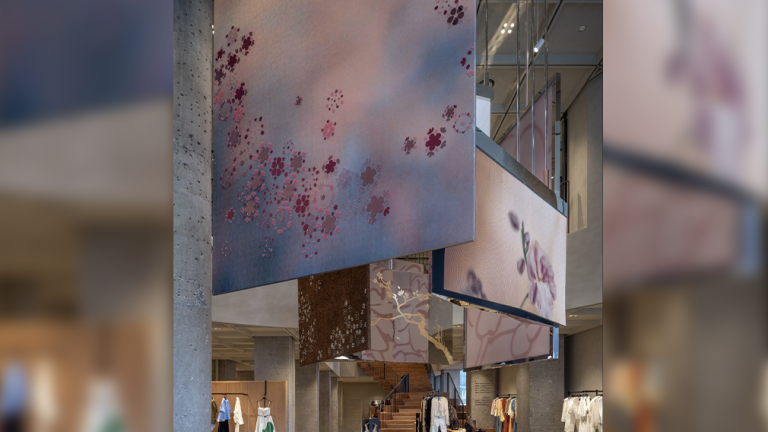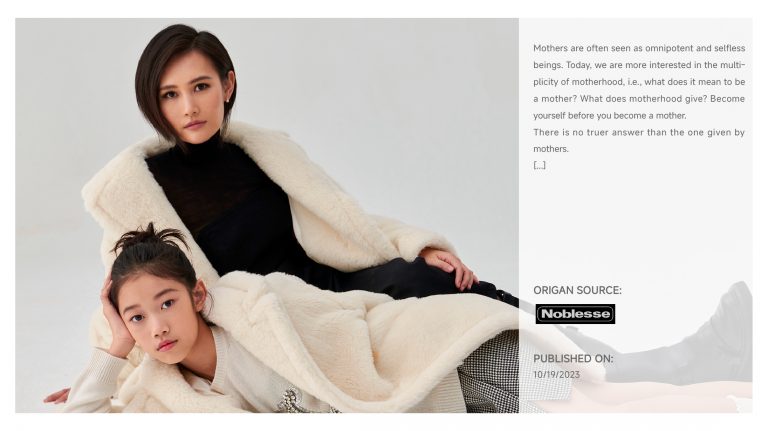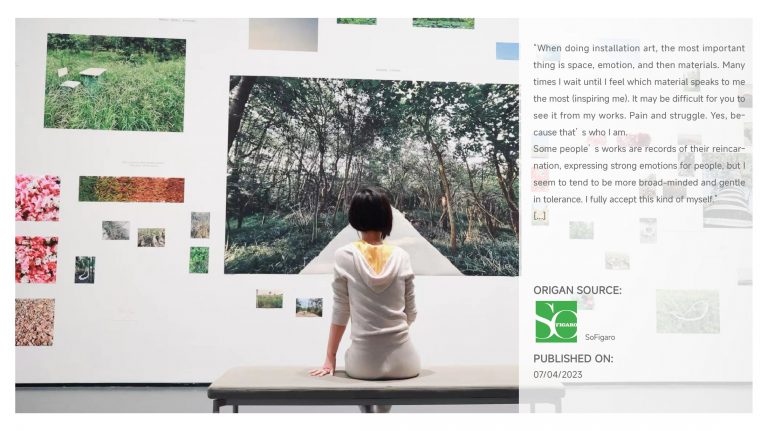
JUJUWANG finds herself between two points, between that of Western visual culture and traditional Chinese beliefs. Born in Shanghai but brought up in the United States, she effectively explores Chinese techniques and philosophies in her installations, making old practices relevant to present day modes of articulating artistic expression.
“It is with a sense of responsibility I believe is everyone’s obligation to value and protect our cultural heritage, the teachings and sensibilities that has brought us to present day, that our ancestors have thrived to bring to perfection”. It is because of this ethos that we may derive her motivations with establishing fresh interpretations, launching viable dialogues between old practices and current society. JUJUWANG has reinterpreted elements such as the gold leaf, traditional stitching, Dai paper and velvet flowers.

Passion by JUJUWANG. Photo courtesy of the artist
Entitled Passion, this installation is composed of continuous golden string going from one end of the room to the other, filling blank spaces and creating interactive and challenging experiences for the public. With this work having already made two appearances in Shanghai, JUJUWANG was inspired by how one can always find their way out of a complicated position with passion. She emphasizes that passion not only describes a state, but also an attitude, the root of all actions and behaviours, and what drives us through life.
A spectacle of reflective shining string that manipulates surrounding shadows and light, the artist looked to sunrays and how they overcome challenges faced when travelling through time and space, and yet, eventually making their way to us.

Restless by JUJUWANG. Photo courtesy of the artist
Described as dynamic, surreal and luxurious as it unfolds before an audience, Restless is composed of 100 square-metres of mirrors in patterns, creating a labyrinth-like site. Situated inside the W Hotel in Shanghai during the CHJ jewelry launch campaign, this installation is presented as a unique and interactive experience for the public. JUJUWANG states, “Restless in a restless world, constantly changing, always evolving, it is a reflection of how an individual is in current society. The multiple situations, tasks and attitudes that one faces today.” The reflections change with every step, just as the contemporary woman shifts and adapts when environments require her to do so. Restless portrays the complexity of individuals and how there exists persistence in motion. In tune with the unveiling of the jewelry line, patterns both constructed and created in this installation represented the motifs in the accessories themselves, portraying an exquisite and ephemeral feeling.

The Blue Lotus by JUJUWANG. Photo courtesy of the artist
Weighing 15 tons and yet 2.5 centimetres thick, ‘The Blue Lotus’ boasts a 4-metre radius with a total surface area of 16 square-metres. JUJUWANG sought to bring about a structure with visually light characteristics despite its extreme weight. Formed of 4088 acrylic pieces, each piece represents an individual in the community this work was created for – Aroma Republic. ‘The Blue Lotus’ portrays a perfect amalgamation of idea and practice in how it forms a complete image of a lotus flower, both an inspiration from the community as well as a representation of perfect equilibrium. Its small acrylic pieces replicate pixels of the final image that stunningly reflect light and allow for a mesmerizing experience.

House of Clouds by JUJUWANG. Photo courtesy of the artist

House of Clouds by JUJUWANG. Photo courtesy of the artist
Shown 6 times with 3 upcoming exhibitions scheduled, along with over 1 million viewings and counting, JUJUWANG introduces Dai paper to the public in House of Clouds. Historically and traditionally, Dai paper is produced by the Dai people, one of the 26 ethnic groups in Yunnan. It was mainly used to copy scripture, but modernization and globalization caused this tradition of copying scripture to disappear, and machines replaced papermaking. Reengaging with the locality of Dai paper and its village, the artist constructed a 100 square metre interactive installation using hundreds of pieces of Dai paper suspended on rotating brackets. Combined with the inclusion of forest scents and ambient music, JUJUWANG uplifts all 5 senses of the viewer.
People from all walks of life have and will continue to interact with this installation, lining up to get a glimpse of its romance, tranquility, and dreaminess. Apart from being widely appraised, House of Clouds raised tourism levels with communities that produce Dai paper, and further provided the public with new perspectives on contemporary uses of this medium.

Palasee by JUJUWANG. Photo courtesy of the artist

Palasee by JUJUWANG. Photo courtesy of the artist
One unique, architecturally minimal insertion in a 600-year-old palace was JUJUWANG’s attempt at “changing time”. At the Chaonan palace in Nanjing, the artist observed mannerisms and routes that visitors took during their visits to the palace. What came to her attention was how little time was spent in observing the details and elegance of entranceways and woodcarvings. She then constructed 100 mirrored stainless steel blocks stacked on each other with the intention of creating optical illusions. This installation aimed to create optical illusions by reflecting their surroundings and attracting visitors to acknowledge the details of the building. The artist’s observations did not cease once this installation came to fruition. By sampling and processing architectural details of the palace with a kaleidoscope to obtain contemporary patterns, she noted that the hanging of tubular objects in the air prolonged visitor interactions from a mere minute, to 5 to 10.

Palasee by JUJUWANG. Photo courtesy of the artist
“It can be said that design is the soul of architecture. If the soul of a building can be extracted and placed before us, it will definitely catch people’s attention.” The Dacheng Hall, as part of Palasee, is a representation of the artist’s beliefs. The artist took samples of 3 metre tall palace doors and traced out their designs onto acrylic. What was left remaining were the geometric designs. With modern materials and lazer engraving technology, these traditional patterns were “projected” onto the transparent material.
We note her usage of both modern and traditional entities. What is then produced are newfound interpretations on Chinese architecture. Described by the artist as a “bridge of time”, ‘Palasee’ seeks to reunite traditional buildings to modern society and its people once again.


